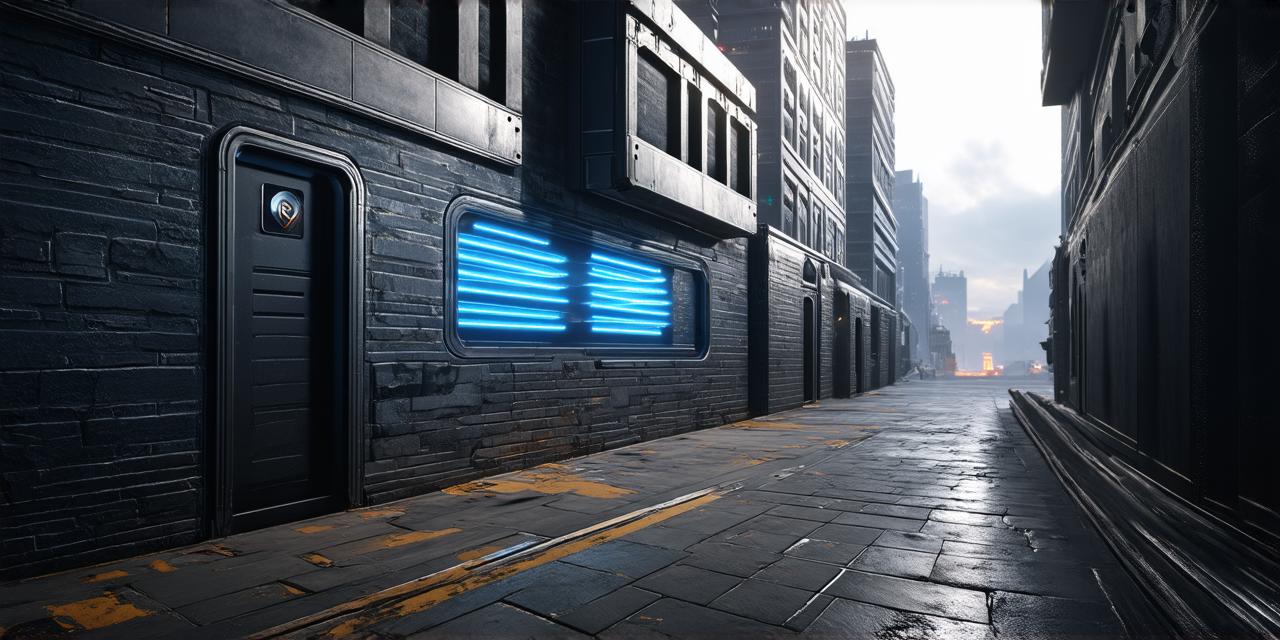Unreal Engine is a powerful tool that has revolutionized the way we create interactive experiences across various industries. From gaming to architecture, this software offers endless possibilities for developers looking to push the boundaries of what’s possible. In this article, we will explore some of the most exciting and innovative applications of Unreal Engine, delving into real-world examples of how it’s being used today.
1. Gaming: The most obvious application of Unreal Engine is in gaming, where it has become an essential tool for creating stunning visuals and realistic environments. With its advanced graphics capabilities and built-in support for virtual reality (VR), developers can create highly immersive experiences that transport players into completely different worlds. For instance, Epic Games, the creators of Fortnite, have used Unreal Engine extensively to develop their wildly popular multiplayer game. The game’s stunning visuals and realistic environments have helped it become one of the most successful games of all time, with over 200 million registered users.
2. Architecture: Another application of Unreal Engine is in architecture, where it’s used to create visualizations of buildings and environments. This software allows architects to quickly and easily create photorealistic renderings that can be used to showcase their designs to clients, stakeholders, and other professionals. By using Unreal Engine, architects can not only save time and resources but also communicate their ideas more effectively and gain greater insight into the design process. For example, Foster + Partners, an architectural firm, has used Unreal Engine to create stunning visualizations of their proposed designs for Masdar City in Abu Dhabi, showcasing the potential of sustainable urban design. The company’s use of Unreal Engine helped them win the project and brought their vision to life.
3. Product visualization: In product development, Unreal Engine is often used to create photorealistic 3D models of products that can be used for marketing and sales purposes. These models can be easily customized to showcase different features and configurations, allowing companies to quickly and effectively demonstrate their products to potential customers. For instance, Nike has used Unreal Engine to create immersive product visualizations that allow customers to explore the features of their sneakers in a virtual environment. The company’s use of Unreal Engine helped them showcase their products in a more engaging way and increased sales.
4. Training simulations: Unreal Engine is also used in training simulations, particularly in fields like aviation, military, and emergency services. By creating highly realistic simulations that mimic real-world scenarios, trainers can help students develop their skills in a safe and controlled environment. This not only saves lives but also helps to improve the overall effectiveness of training programs. For example, NASA has used Unreal Engine to create immersive simulations that allow astronauts to practice complex procedures in space without risking their lives. The company’s use of Unreal Engine helped them train astronauts for future missions and increased safety.
5. Retail: In retail, Unreal Engine is used to create immersive virtual storefronts that allow customers to explore products and environments in 3D. These virtual stores can be tailored to specific brands or product categories, providing a unique shopping experience that sets them apart from traditional brick-and-mortar stores. For instance, IKEA has used Unreal Engine to create a virtual showroom that allows customers to explore their furniture products in a virtual environment and customize them to suit their needs. The company’s use of Unreal Engine helped them increase sales and provide a more engaging shopping experience.
6. Healthcare: In healthcare, Unreal Engine is used for medical training simulations, allowing doctors and nurses to practice complex procedures in a safe and controlled environment. This not only improves patient outcomes but also helps to reduce the risk of errors during real procedures. For example, the University of Washington School of Medicine has used Unreal Engine to create immersive simulations that allow medical students to practice surgical procedures without risking the lives of real patients. The company’s use of Unreal Engine helped them improve patient care and reduce errors.

7. Education: Finally, in education, Unreal Engine is used to create interactive learning experiences that engage students and enhance their understanding of complex subjects. For instance, it can be used to create virtual field trips or historical reenactments that bring history to life in a way that traditional textbooks cannot. For example, the British Museum has used Unreal Engine to create an immersive virtual tour that allows students to explore the museum’s exhibits in 3D and learn about ancient civilizations in a more engaging way. The company’s use of Unreal Engine helped them increase engagement and improve student understanding.
In conclusion, Unreal Engine is a powerful tool that offers endless possibilities for creating interactive experiences across various industries. From gaming to architecture, this software has revolutionized the way we create and experience digital content. As technology continues to evolve, it’s likely that we will see even more innovative uses of Unreal Engine in the future.
